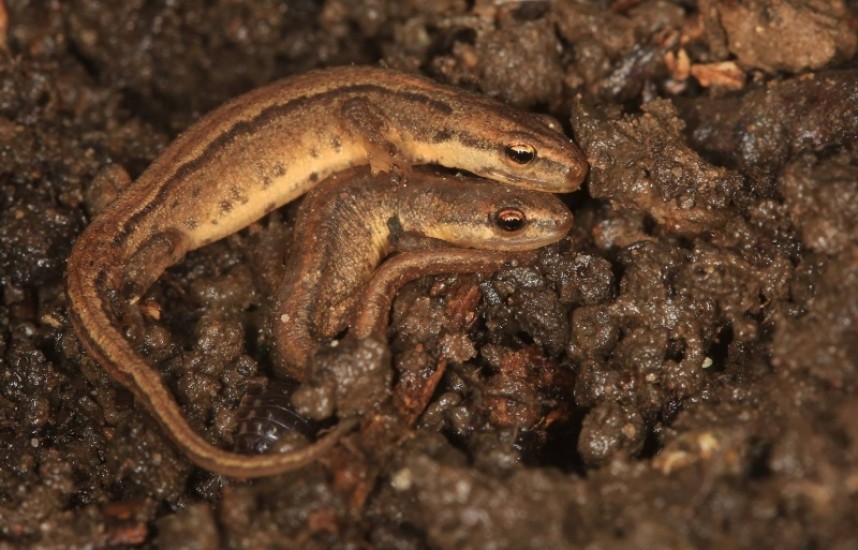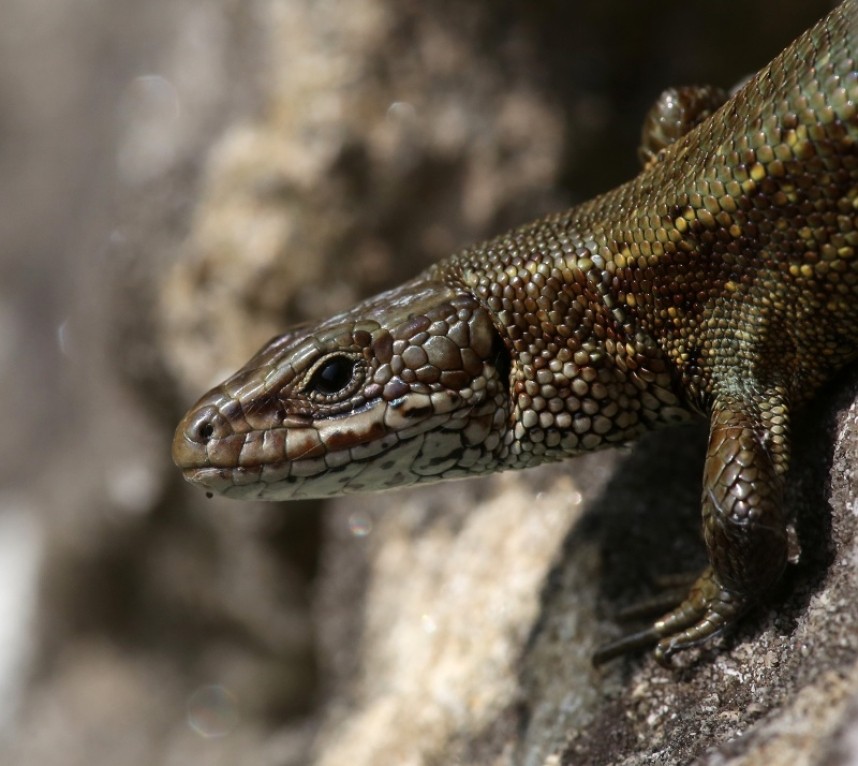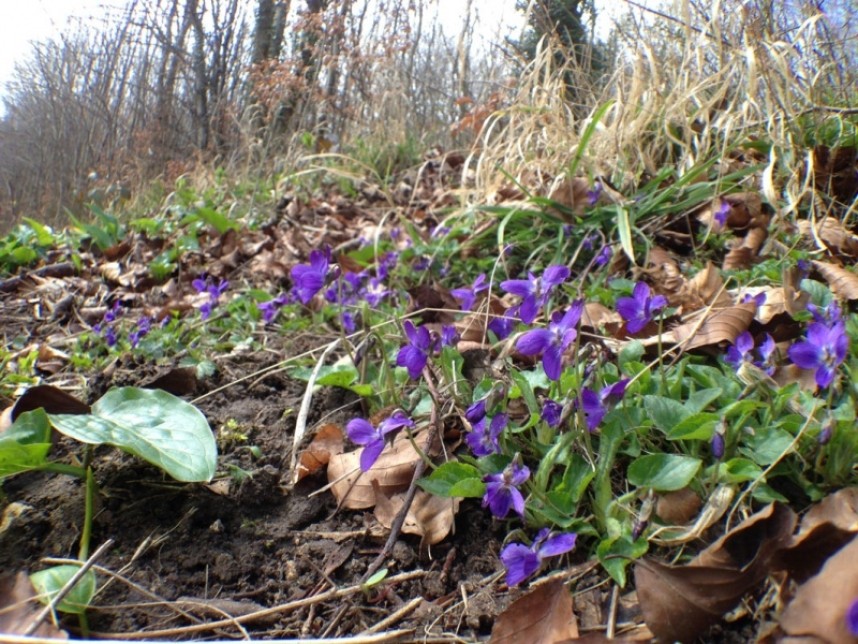What To Look Out For - March 2016
March is a great month for wildlife watching there is so much happening! No matter what the weather conditions many resident birds will be well on the way with their nesting season. Mistle Thrushes nest in late January or February, by the end of March; the juveniles may even have fledged. The nest is often built in the divide or v shape between two trunks or strong branches. It can be fairly high up in a tree. Once the whole brood have flown the nest they often gather and remain in a family group for a while so the adults can teach the youngsters how to find food. A colloquial name the ‘Stormcock’ relates to their resilience in times of bad weather which may occur during their early nesting season. They are a fabulous bird to look out for because they are so bold and can be common in town parks and gardens.

Mistle Thrush © Steve Race
The most likely newt to find in your garden is the Common or Smooth Newt. Smooth Newt juveniles (known as efts) leave their hibernation sites in early spring but don’t breed until they are 2-3 years old. They spend the majority of their life on dry land but mate in water. Courtship involves tail slapping and vibration as the males attempt to lure a female. They are great for gardeners because of their taste for eating (amongst many other insects) slugs! They grab their prey with their teeth in contrast to lizards which use their tongue.

Smooth Newt juveniles © Dan Lombard

Smooth Newt male © Dan Lombard
To find a Common or Viviparous Lizard you usually need to head out away from home. They are a great subject for photography and often the first reptile to raise its beautiful head from winter slumber. Viviparous is the name given to animals which produce live young rather than eggs. As most lizards produce eggs, the Common Lizard is unusual in this family. They are the most northerly Lizard in Europe, being well adapted to colder temperatures. In 2014 we spotted our first one out of hibernation on the 3rd March in the North York Moors National Park. Look out for them on heathland anywhere in the county. Sites such as Skipwith Common YWT reserve or on the coast near Spurn YWT reserve are good. Try to find sunny and warm corners of habitat out of the wind often where branches have collected into a pile or tree trunks have fallen and where the ground is dry.

Common Lizard © Dan Lombard

Common Lizard © Dan Lombard
The Yorkshire coast is a lovely place to be in the spring especially if the wind is from the west and the sun is shining! Rocky shores can be alive with wildlife. Turnstones specialise in feeding on tough food, their sturdy bill can dislodge crustaceans from rocks or overturn small sticks in search for food. Look out for them in amongst seaweed where they love to scramble around. Their winter plumage is fantastic camouflage. They have the honour of being the first wading bird to be fitted with a geo-locater for its complete migration. In 2011 researchers in Australia tracked a Turnstone 27,000 km from its Arctic nesting site to its winter quarters and back again!

Turnstone © Steve Race
Towards the end of March head for your local woods where the first flowers will put a spring in your step! Two of my personal favourites are Sweet Violet and Coltsfoot. Sweet Violet is one of our most treasured wild flowers. It has a delicate scent which has been regarded as one of the most beautiful aromas in the plant kingdom and has been used in many perfumes. They are also the caterpillar food plant for many of our most loved butterflies such as Fritillaries. Coltsfoot comes into flower before its leaves appear, leading to the nickname "son before the father" The aromatic flowers can be eaten and have been used in salads to add colour. Look out for Coltsfoot anywhere there is disturbed ground it loves to grow on thin soils where other flowers fear to tread!

Coltsfoot © Richard Baines

Sweet Violet © Richard Baines
Richard Baines YCN



 Back to Blog
Back to Blog
